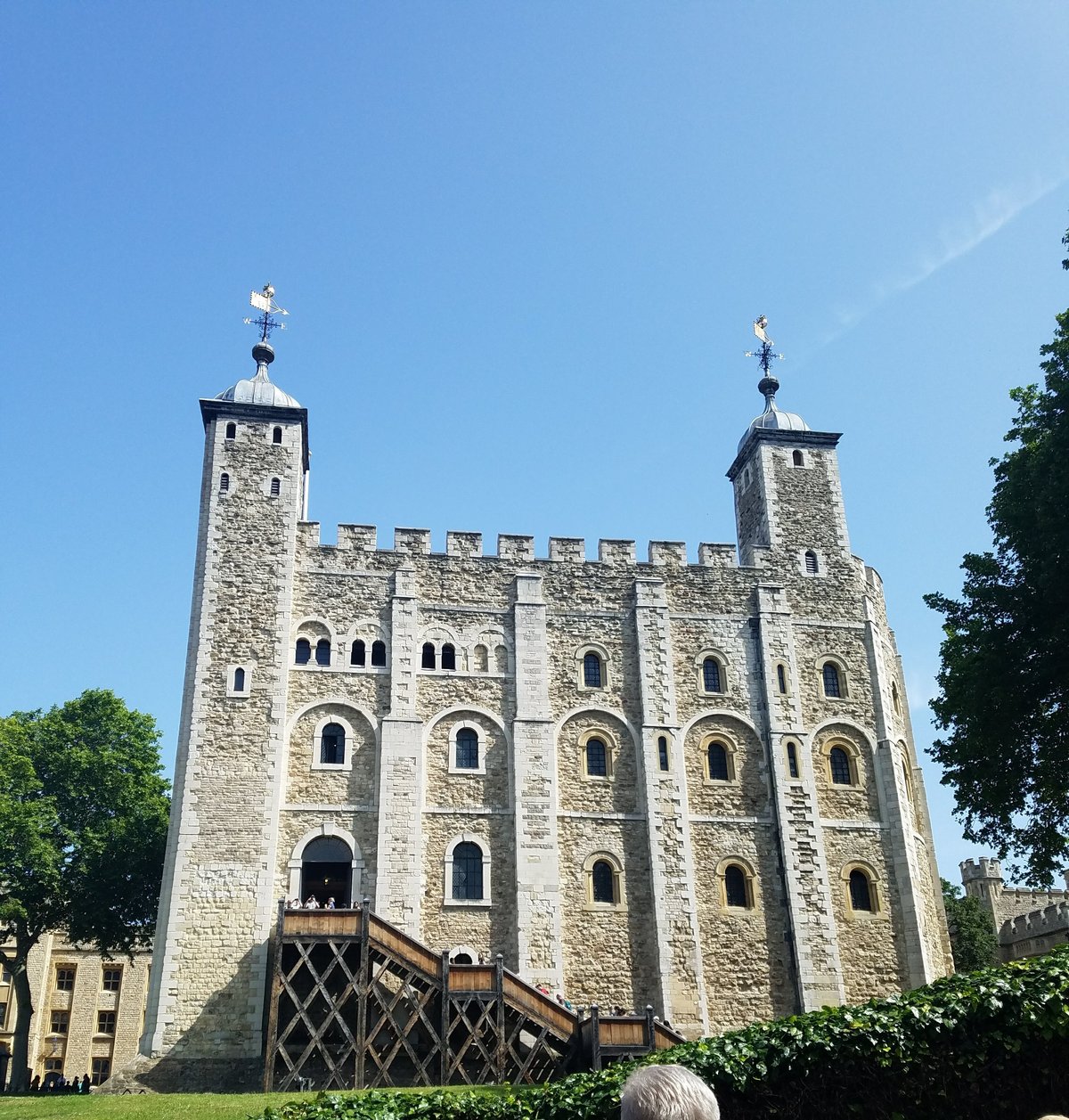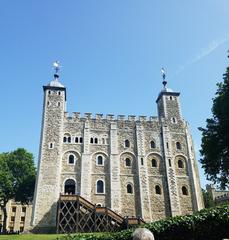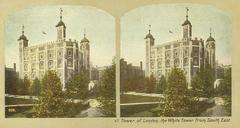
The White Tower London: Visiting Hours, Tickets, and Historical Sites Guide
Date: 14/06/2025
Introduction
The White Tower, an enduring symbol of London’s medieval heritage and royal authority, stands as the centerpiece of the Tower of London complex. Commissioned by William the Conqueror in the late 11th century and designed by Gundulf, Bishop of Rochester, this imposing fortress was constructed to assert Norman dominance over London. Its thick defensive walls of Kentish ragstone and imported Caen stone, coupled with its signature whitewashed exterior, make the White Tower a masterpiece of Norman military and ecclesiastical design.
Visitors today can explore not only its formidable structure but also the Chapel of St. John the Evangelist—one of England’s best-preserved Norman churches—and the Royal Armouries collection showcasing historic arms and armor. The White Tower’s transformation from royal residence and fortress to prison and treasury reflects the turbulent history of England, including its role in housing high-profile prisoners and safeguarding the Crown Jewels. This comprehensive guide provides all practical information—visiting hours, tickets, accessibility, guided tours, and travel tips—to ensure a memorable experience at this UNESCO World Heritage Site. For detailed planning, consult official sources (thetoweroflondon.uk, hrp.org.uk, Wikipedia).
Historical Overview
Foundations and Construction
Commissioned around 1078 by William the Conqueror, the White Tower was designed as a powerful fortress to establish Norman control in London. Standing about 90 feet (27 meters) tall, it remained the city’s tallest building for centuries. Its walls, up to 15 feet (4.6 meters) thick, were built for formidable defense. The four corner turrets, whitewashed exterior, and strategic location on the north bank of the Thames clearly displayed Norman authority (thetoweroflondon.uk).
Architectural and Military Significance
The White Tower epitomizes Norman military architecture, serving as a model for later English castles. The ground floor was used for storage; upper floors contained a great hall, royal apartments, and the Chapel of St. John the Evangelist—a rare, well-preserved Norman church. Over time, curtain walls, moats, and additional towers were added for increased defense (buckinghampalace.co.uk).
Evolution of Function
Initially a royal residence and fortress, the White Tower also functioned as a refuge for monarchs during unrest. Under Henry III, royal apartments and fortifications were expanded. It later housed the Royal Mint, Royal Menagerie, and Ordnance Survey, reflecting its multifaceted importance (discoverbritain.com).
Prison and Political Intrigue
The White Tower is known for its role as a prison for high-profile captives, including Ranulf Flambard and Sir Walter Raleigh. Dramatic events such as the imprisonment and execution of Anne Boleyn, the tragic reign of Lady Jane Grey, and the disappearance of the Princes in the Tower unfolded here (thetoweroflondon.uk, thetourguy.com).
Symbol of Monarchy and Authority
Throughout its history, the White Tower has symbolized royal authority. It has housed the Crown Jewels, the royal treasury, and the Line of Kings exhibition—an early museum display of royal armor and weaponry, still seen today (hrp.org.uk).
Religious and Cultural Importance
The Chapel of St. John the Evangelist, inside the White Tower, is an exceptional example of Norman ecclesiastical architecture. The Tower’s legends, ghost stories, and presence in literature have cemented its place in British culture (thetoweroflondon.uk, thetourguy.com).
Visiting the White Tower: Practical Information
Opening Hours
- Standard Hours: 9:00 AM to 5:30 PM (last admission at 5:00 PM)
- Seasonal Variations: Winter hours may be shorter; check the official site for updates.
Tickets and Pricing
- Adult: Around £29.90
- Concessions: Discounts for seniors, students, and families
- Children (5–15): Reduced rate; under 5s free
- Booking: Online purchase is recommended to secure entry and avoid queues. Combination tickets with other attractions are available (official ticketing page).
Getting There
- Tube: Tower Hill station (Circle and District lines), 5-minute walk
- Bus: Multiple routes
- River: Tower Pier for riverboat arrivals
Accessibility
While the Tower’s medieval architecture means some stairs and uneven floors, step-free access is available to much of the Tower complex. Wheelchairs and mobility scooters are available to hire. For detailed information, see the official accessibility guide.
Guided Tours and Audio Guides
- Yeoman Warder (Beefeater) Tours: Free with admission, offering historical insights and stories.
- Audio Guides: Available for rent or app download; multiple languages supported.
Special Events
- Ceremony of the Keys: The world’s oldest military ceremony, held nightly. Tickets are limited and must be booked in advance.
- Exhibitions and Reenactments: Special events and seasonal activities enhance the visitor experience.
Photography
Photography is permitted in most areas, though flash is restricted in certain exhibits (e.g., the Chapel of St. John and Crown Jewels).
Exploring the White Tower: Layout and Key Attractions
Exterior and Structure
- Height: Approx. 27 meters (90 feet)
- Materials: Kentish ragstone and Caen stone
- Features: Four turrets, narrow defensive windows, and a whitewashed façade (Wikipedia).
Interior Highlights
- Basement: Former storage and crypt
- Ground Floor: Later used as a prison
- First Floor: Main hall and administrative rooms
- Second Floor: Chapel of St. John the Evangelist—one of the best-preserved Norman churches
- Royal Armouries: Extensive collection of arms and armor, including suits belonging to Henry VIII and Charles I
Visitor Flow
Visitors enter via a wooden staircase on the south face, following a one-way route through exhibition spaces and concluding at St. John’s Chapel.
Visitor Amenities
- Cafés and Shops: Located elsewhere in the Tower complex; the New Armouries Café is nearby.
- Restrooms: Available throughout the complex.
- Family Activities: Interactive exhibitions, activity trails, and seasonal workshops for children.
Nearby Attractions
- Within the Tower Complex: Crown Jewels, Medieval Palace, Tower Green
- Nearby: Tower Bridge, The Shard, St. Katharine Docks, The Monument to the Great Fire of London
Frequently Asked Questions (FAQ)
Q: What are the White Tower’s opening hours?
A: Usually 9:00 AM–5:30 PM (summer), 9:00 AM–4:30 PM (winter). Check the official site for details.
Q: How much do tickets cost?
A: Around £29.90 for adults, with concessions and family tickets available. Book online for best rates and availability.
Q: Is the White Tower accessible for wheelchair users?
A: Some areas are accessible; others, due to historic stairs, are not. See the accessibility guide.
Q: Are guided tours included?
A: Yes, Yeoman Warder tours are included with admission.
Q: Can I attend the Ceremony of the Keys?
A: Yes, but tickets are limited and must be booked in advance.
Conclusion
The White Tower stands as a monument of extraordinary historical and architectural value, encapsulating nearly a thousand years of British royal, military, and cultural history. Whether you’re a history enthusiast, architecture lover, or casual visitor, careful planning—booking tickets online, considering guided tours, and reviewing accessibility details—will ensure a rewarding experience. Don’t miss the chance to explore the White Tower and its remarkable stories, exhibitions, and traditions.
For more travel tips and updates, download the Audiala app and follow us on social media. Explore our other posts for more insights on London’s historic sites.
References
- The White Tower at the Tower of London: History, Visiting Hours, Tickets & Travel Tips, 2025, Historic Royal Palaces
- White Tower Visiting Guide: Architectural Marvel, Tickets, Hours & Tips at London’s Historic Site, 2025, English Monarchs & Wonders of the World
- The White Tower: A Complete Visitor’s Guide to London’s Historic Icon, 2025, History.com & Historic Royal Palaces
- Visiting the White Tower: Hours, Tickets, and Must-See Attractions in London’s Historic Landmark, 2025, Historic Royal Palaces





















































































































































































































































